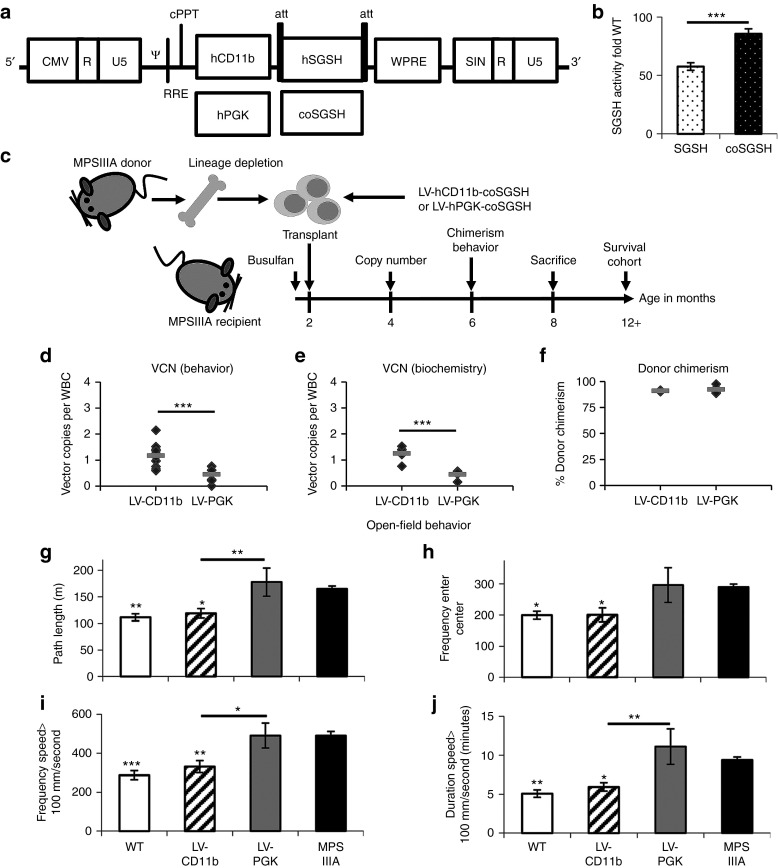Figure 2.
LV-CD11b–modified autologous hematopoietic stem cells correct MPSIIIA mouse behavior. (a) pCCL LVs were made containing either human CD11b or hPGK promoters driving normal or coSGSH. (b) Expression of hSGSH and coSGSH was compared by transient transfection of the human CHME3 microglial cell line. (c) MPSIIIA bone marrow was lineage depleted and transduced with LV-hCD11b-coSGSH or LV-hPGK-coSGSH at an MOI of 80, then transplanted into busulfan myeloablated MPSIIIA mice. (d,e) VCN was determined in WBCs (behavior n = 8–12; biochemistry n = 5). (f) 4 months post-transplantation, the donor chimerism in WBCs was determined by flow cytometry (n = 3–7). (g–j) Open-field behavior was evaluated at 6 months (24 weeks) of age (n = 8–15 female mice per group). The measures of hyperactivity were: (g) path length, (i) frequency, and (j) duration spent moving over 100 mm/second, while (h) frequency of centre entries measures thigmotaxis and may be a measure of sense of danger. Error bars represent the SEM. Significant differences to MPSIIIA, between the two groups marked with a line, are demonstrated with *P < 0.05; **P < 0.01; and ***P < 0.001. CMV, cytomegalovirus; coSGSH, codon-optimized human N-sulfoglucosamine sulfohydrolase; hPGK, human phosphoglycerate kinase; hSGSH, human N-sulfoglucosamine sulfohydrolase; LV, lentiviral vector; MOI, multiplicity of infection; MPSIIIA, mucopolysaccharidosis type IIIA; VCN, vector copy number; WBC, white blood cell; WT, wild-type.

